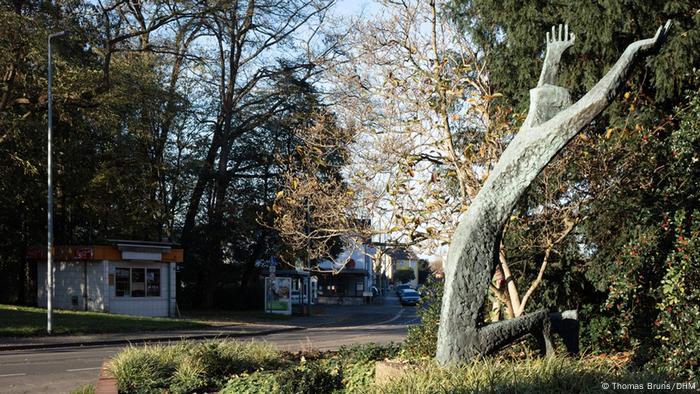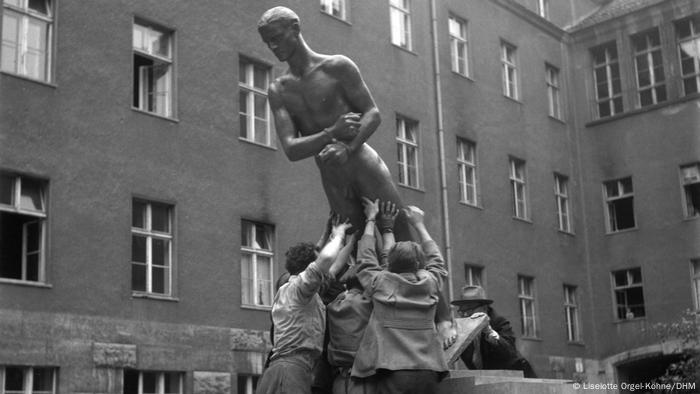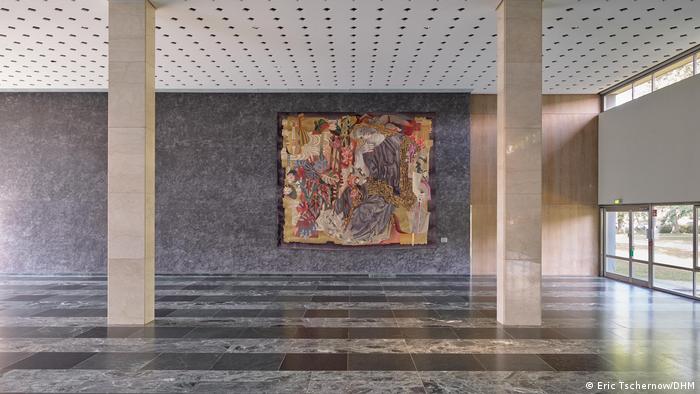A new historical exhibition in Berlin explores the postwar career of the artists listed as crucial to Nazi culture.

Sculptor Adolf Wamper didn't change his style for this 1953 memorial to coal miners in Gelsenkirchen
The Nazis used arts and culture as propaganda tools. Their definition of acceptable art was very narrow, and one that promoted their racist ideology. Many artists were banned from working or persecuted; a great number of them fled into exile.
But on the other hand, the work of certain artists was deemed to be of extremely high value to the regime. Even in the final phase of World War II, a select few of artists were declared to be "indispensable" to Nazi culture, exempting them from military duty and work assignments.

Memorial to the victims of war and tyranny: bronze sculpture by Hans Breker alias Hans van Breek (1964)
This list of artists was compiled in 1944 by Propaganda Minister Joseph Goebbels on behalf of Adolf Hitler.
The Deutsches Historisches Museum (German Historical Museum, DHM) in Berlin uses this list of the "Divinely Gifted" as a starting point for its latest exhibition on the artists favored by the Nazi regime.
"Their visual contribution to the Nazi ideology was immense," said DHM President Raphael Gross at a press conference in Berlin, adding that despite their Nazi ties, these artists were actually able to continue their careers after 1945.
As curator and art historian Wolfgang Braun pointed out, the widespread belief that the creation of the Federal Republic of Germany also was a new beginning for cultural policy is a myth that needs to be revised.

Previously sponsored by the Nazis: Richard Scheibe's 1953 memorial for the victims of the 1944 plot to assassinate Hitler
Propaganda as an instrument
The exhibition "'Divinely Gifted': National Socialism's favored artists in the Federal Republic" focuses on the list's 378 visual artists, all of them male. Additionally, as it also included architects, musicians, actors, filmmakers, novelists or playwrights, the list highlighted a total of around 1,000 people.

Hitler's preferred sculptor, Arno Breker, and his 'Athena' of 1957 — a popular Nazi motif
The show explicitly looks into the work of these artists after World War II. In the young Federal Republic of Germany, they kept obtaining commissions from the state, corporations and the Church; they became professors at art academies and took part in competitions.
Some cases particularly flagrant
For example, sculptor Willy Meller, who had not only made different sculptures for the Olympic Stadium in Berlin, but also numerous reliefs of imperial eagles during the Nazi era, was also commissioned in 1952 to make a federal eagle for the Palais Schaumburg in Bonn, the then official residence of the Federal Chancellor. Meller even sculpted a work for the Oberhausen Memorial Hall for the victims of National Socialism, which opened in 1962.
Hans Breker, the brother of Hitler's favorite sculptor, Arno Breker, was commissioned to create a Karl Marx bust in Moscow and a memorial for the victims of the Nazi tyranny in the West German city of Wesel.

Despite criticism, Nuremberg Meistersingerhalle's 'Die Frau Musica' by Hermann Kaspar
The exhibition therefore exposes how these artists adapted to different political systems and how postwar Germany avoided looking into their ties with the Nazis.
Around 300 sculptures, paintings, tapestries, models, drawings, photographs, film and audio documents, as well as posters and media reports show how networks continued to exist after the war, and how the "Divinely Gifted" artists promoted each other until the 1970s, for example through commissions — without facing any public criticism or open debate.
The exhibition "Divinely Gifted': National Socialism's favored artists in the Federal Republic" can be viewed from August 27 through December 5, 2021 at the Deutsches Historisches Museum in Berlin.
No comments:
Post a Comment